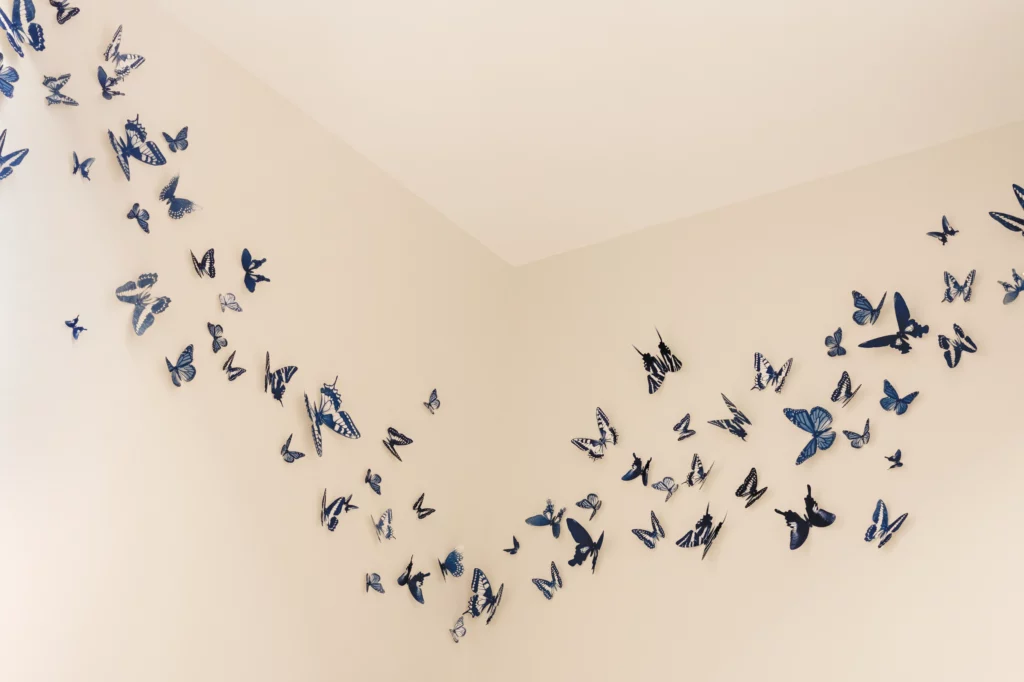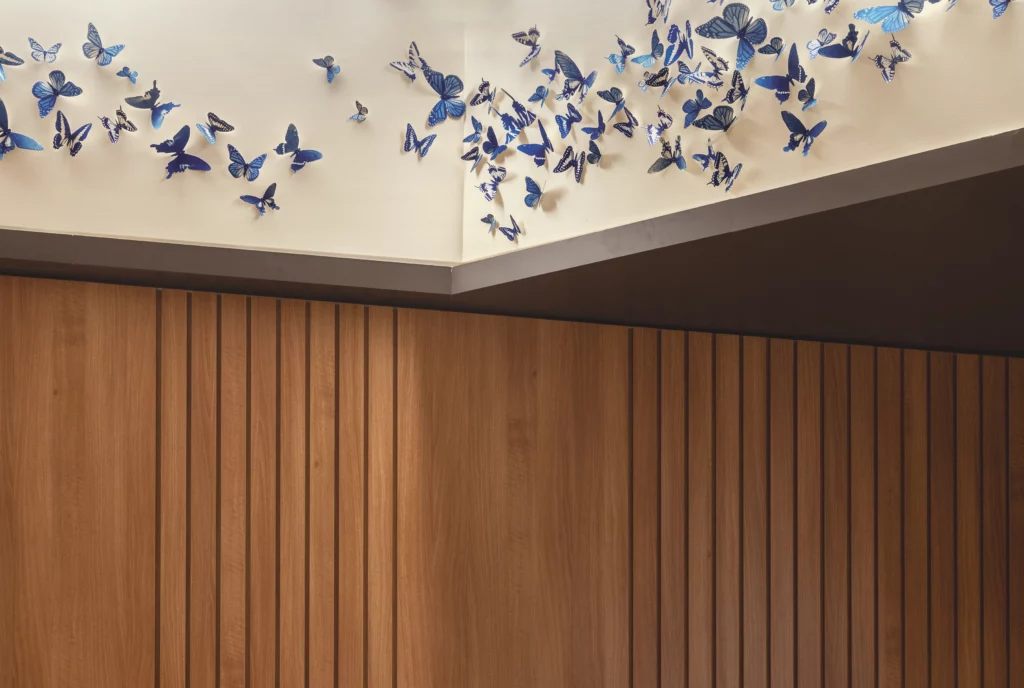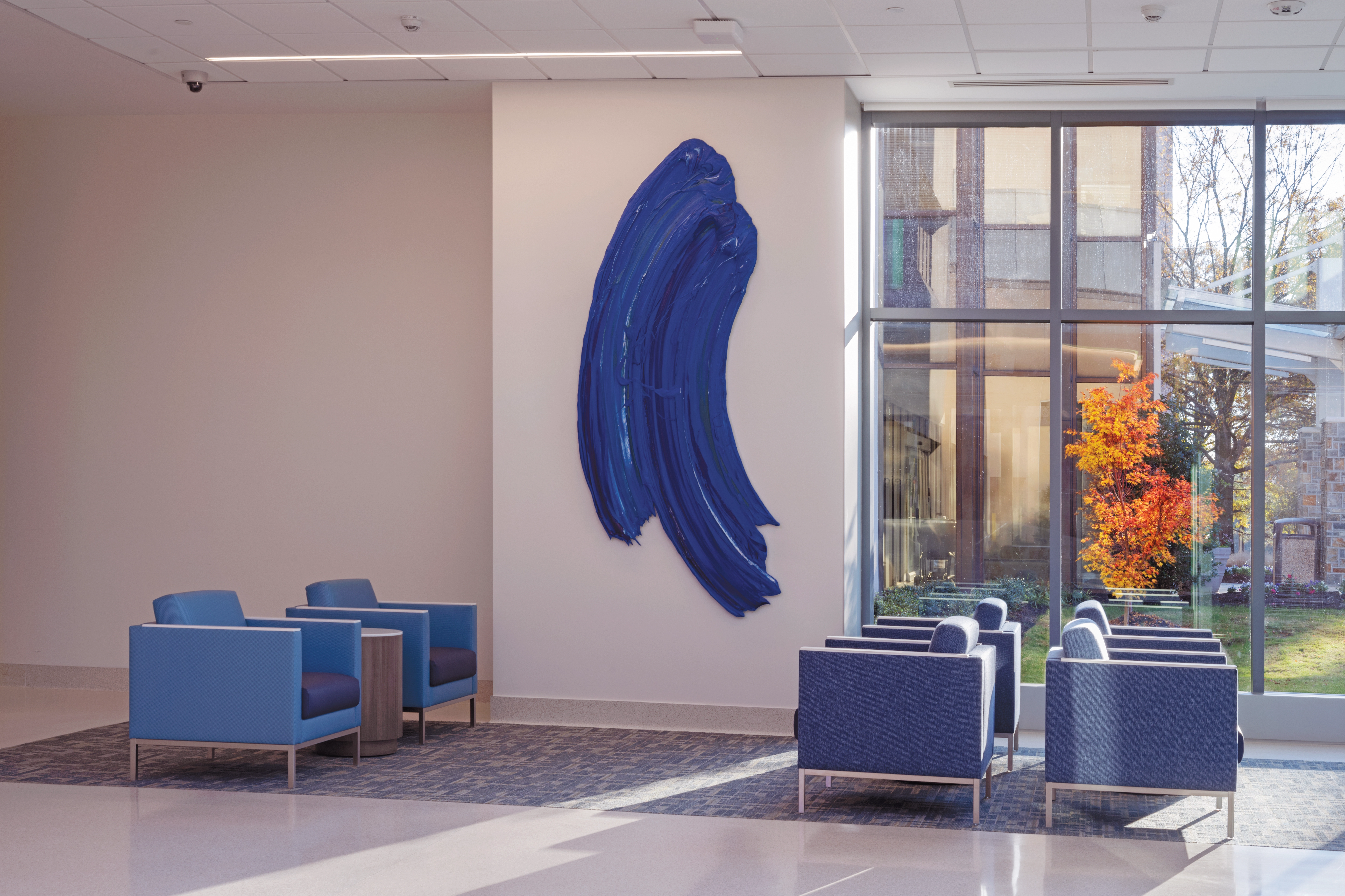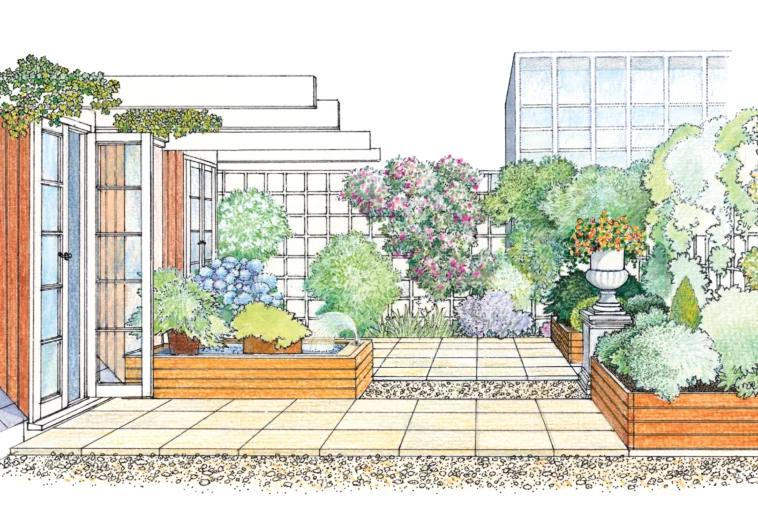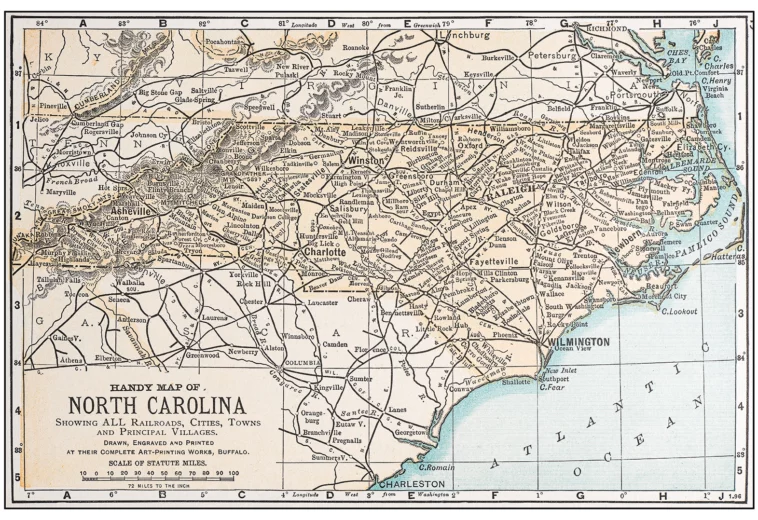Article:
Art’s Power to Heal
Duke Raleigh Hospital program inspires and comforts patients
BY ELIZABETH BRIGNAC | PHOTOS COURTESY OF ARTSUITE
Duke Raleigh Hospital’s main entrance welcomes visitors into an airy room lined with honey-colored wood panels interspersed with splashes of blue-green. Bright glass cylinders hang and illuminate the space with pale blue, white and green light. Two great strokes of textured paint curve up like a blue wave on a wall across from the entrance. A closer inspection reveals the wave isn’t paint, but a sculpture called Nigamo by Don Martiny.
This lobby isn’t anyone’s notion of a stereotypical hospital space. Duke Raleigh Hospital’s new Arts & Health program is part of a growing movement to bring nature, light, art and music into the healing and caregiving experiences.
Researchers have been studying the link between healing and the arts for decades. In 2010, The American Journal of Public Health published “The Connection Between Art, Healing, and Public Health: A Review of Current Literature.” Based on the journal’s review of many years of research, the authors determined that engaging with art improves patients’ health outcomes.
Duke Raleigh Hospital’s Arts & Health program has grown in response to studies such as this. “With the addition of our South Pavilion tower in July of 2021, we thought, ‘What better time, as we’re bringing on a brand-new facility… to launch the Arts & Health program?’” says Duke Raleigh Hospital Assistant Vice President for Finance and Divisional CFO Leigh Bleecker, who spearheads the project. “Evidence says health and the arts go hand in hand to promote the well-being of our patients and our families—and even our staff.”
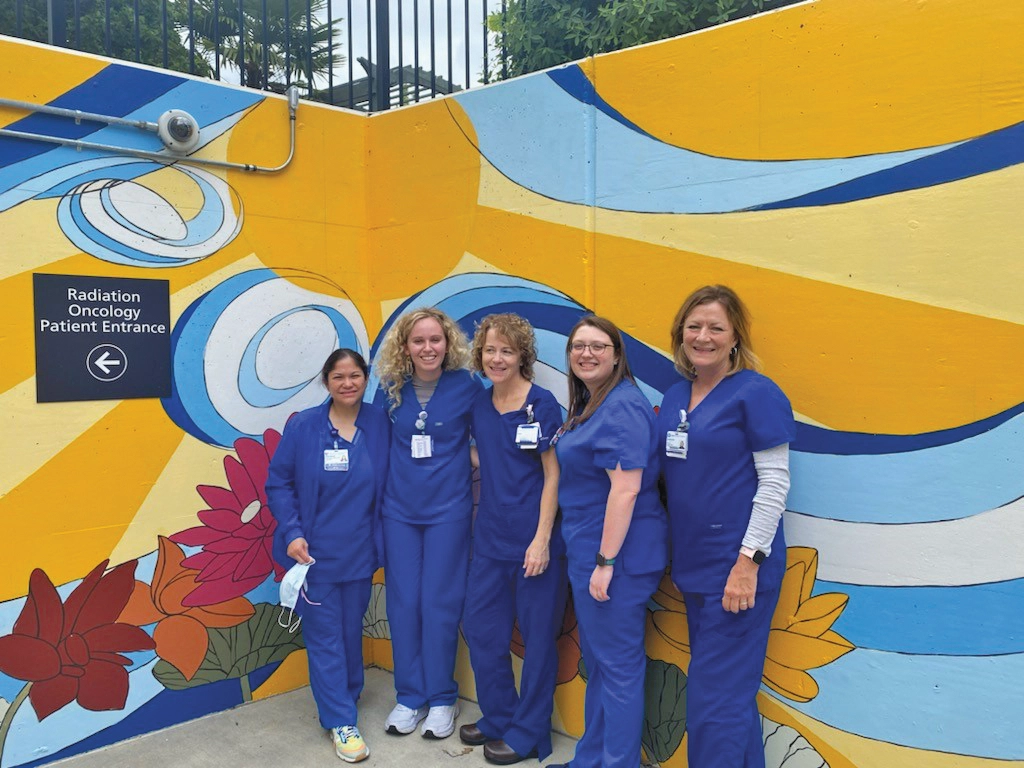
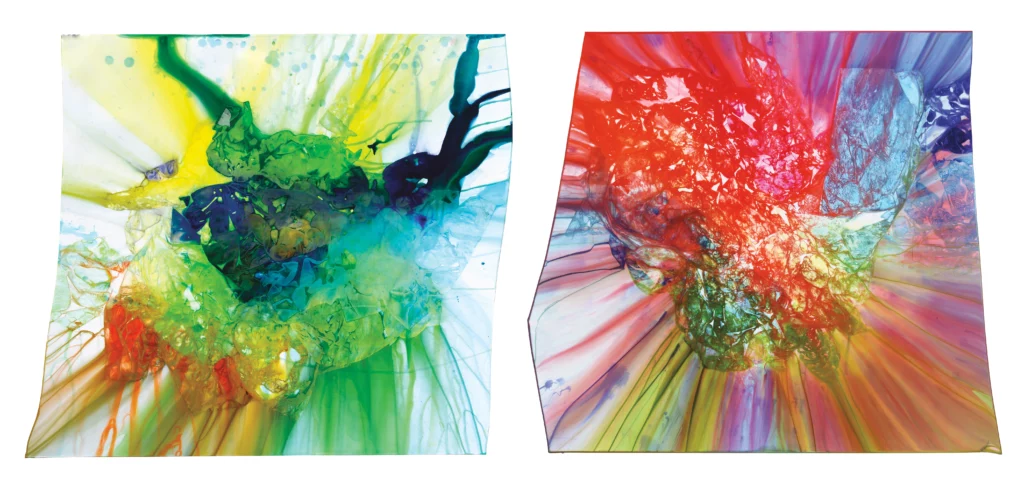
MOVING MUSIC
During the COVID-19 pandemic, musicians began performing in the hospital’s public spaces to bring comfort to stressed patients, visitors and staff. Today, violinists, pianists and harpists continue to play in lobbies and waiting rooms. The music benefits the entire hospital community. “I enjoy our performing arts program so much—especially the fact that both patients and team members get to enjoy it,” says Betty Richardson, an advanced health unit coordinator in the pediatric care unit. “When we’re working in the unit, it’s a treat to experience the soothing music and the calming effect it has on everyone in the vicinity.”
In November, the hospital deemed it safe for musicians to perform at patients’ bedsides. Musicians playing ukuleles, guitars, harps and violins come through on different days. “All they have to do is show up with a piece of musical equipment and the requests just start coming,” Bleecker says. Patients can ask for a performance, and staff can direct musicians to those patients and others they feel need additional emotional support. “A lot of times patients will fall right to sleep,” Bleecker says. “It helps de-stress them. It helps de-stress our team.”
VISUAL INSPIRATION
The Arts & Health program displays a wide range of works by diverse, regional artists, and reaches the hospital’s patients, families and staff members. “We want to choose artists who are representative of the community at large,” says Marjorie Hodges, an art consultant who guides the visual art side of the program. The art varies in form, theme and material. Randy Shull, for example, incorporates Mexican hammocks into his paintings. Maya Freelon makes her pieces using tissue paper and a pottery wheel.
The program selects works that incorporate themes designed to help patients and visitors cope with the stress of being in a hospital—or having a loved one there. “We didn’t just want to pick art that was beautiful … but artists who were doing works that tell a story,” Hodges says.
Viewers can scan a QR code next to the title of each work to access a short video by the artist talking about their process and inspiration. Freelon’s video describes her works “Sprightly” and “Reset” on the first floor of the South Pavilion as contemplative opportunities. “One of my greatest goals as an artist is to help people take a mental break,” she says. “I see… sitting with [my artwork] as kind of a form of meditation.”
Leah Sobsey’s “Swarm of Butterflies” incorporates 400 butterflies, each built from a photograph of a different species. It lines the hallway from the hospital’s entrance to its outpatient waiting room. “There’s a metaphor in the butterflies that feels uplifting,” Sobsey says in her video. Sick patients and their families benefit from considering themes related to transformation and freedom.
The program also encourages patients and staff to create their own artwork. Patients receive coloring kits with a coloring book of North Carolina sites and symbols designed by Raleigh muralist Sean Kernick. The program has held two exhibitions of art created by staff members. “The staff exhibition was born out of COVID,” Hodges says. “It was like, how do we show our support and give them an outlet?” Hospital patients and staff vote on their favorite pieces. The staff exhibits have proven so popular that the Arts & Health program plans to make them a quarterly event.
A TRANSFORMATIVE MURAL
Georgia Tardy’s mural “Despite It All, I Will Arise” has particularly moved Duke Raleigh Hospital’s staff and patients. Many radiation oncology patients come in daily for treatment—an exhausting process. Along with staff, these patients enter through a utilitarian back entrance. There, Tardy has painted a huge mural along what was once a gray cement wall. For a month, patients got to watch the entrance transform from a dull space to an inspiring pathway as they walked to and from their treatments.
The mural spotlights the lotus flower, which rises up out of the mud and perseveres into beauty. “Patients and loved ones frequently mention how it brightens their day, and our team members love the positive energy it provides as they enter the building to deliver care,” says Heather Spencer, regional director of radiation oncology. Many patients and staff take photos in front of a large butterfly Tardy painted in one corner.
“The mural … gives them a sense of purpose and a sense of healing,” Bleecker says. “Spread your wings, and now you’re off to do more things.”
Learn more about Raleigh by exploring all of our articles at midtownmag.com.
